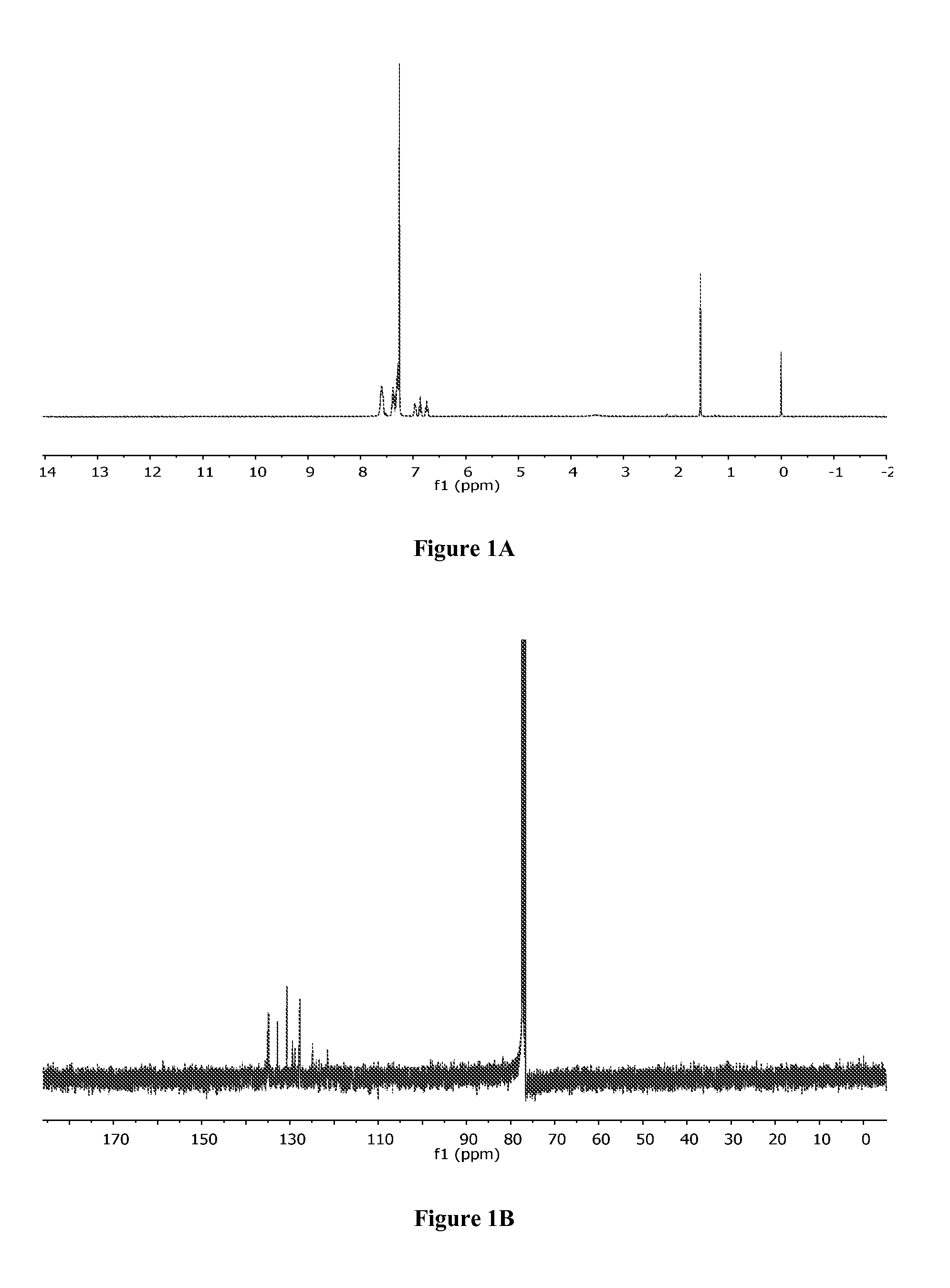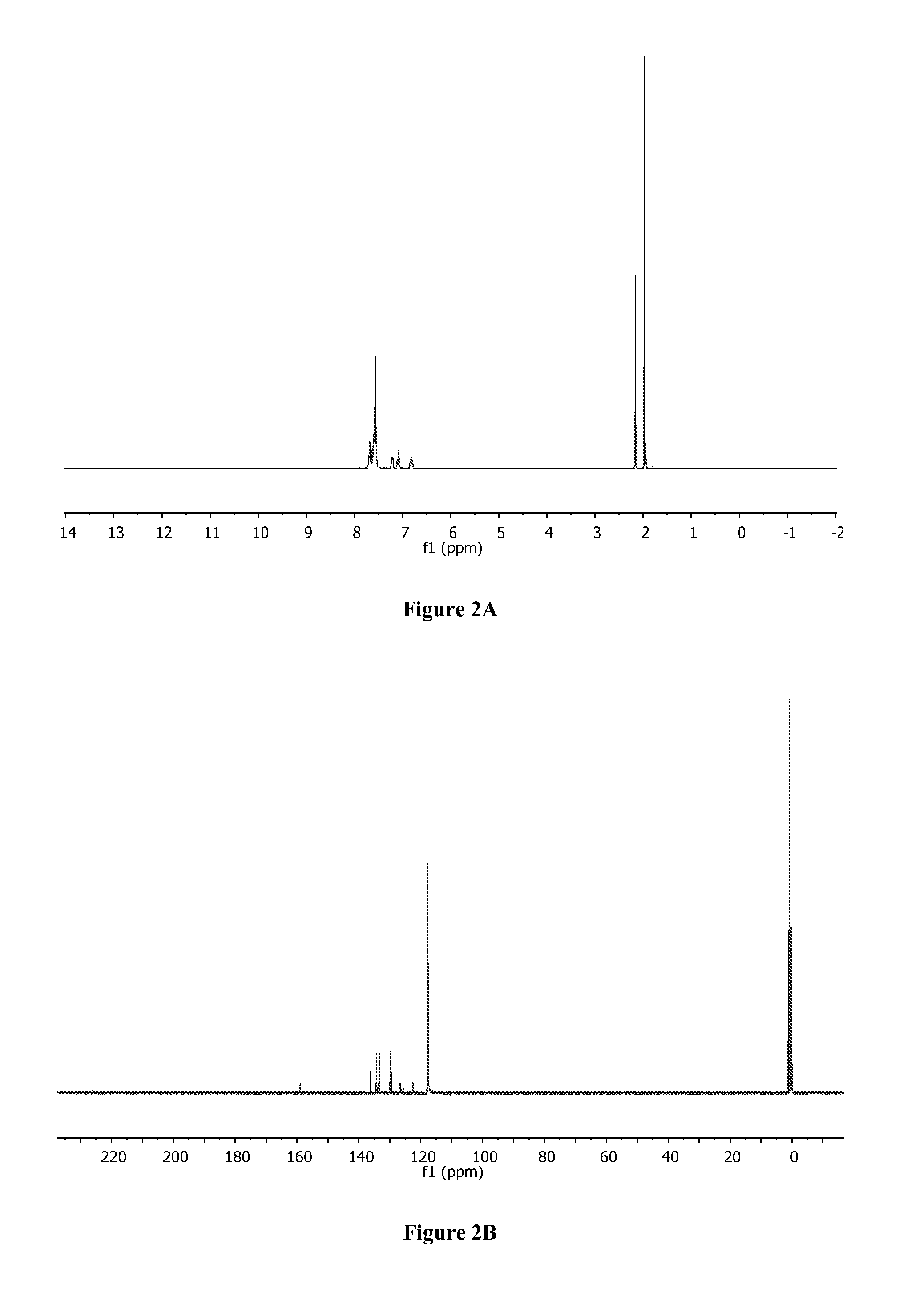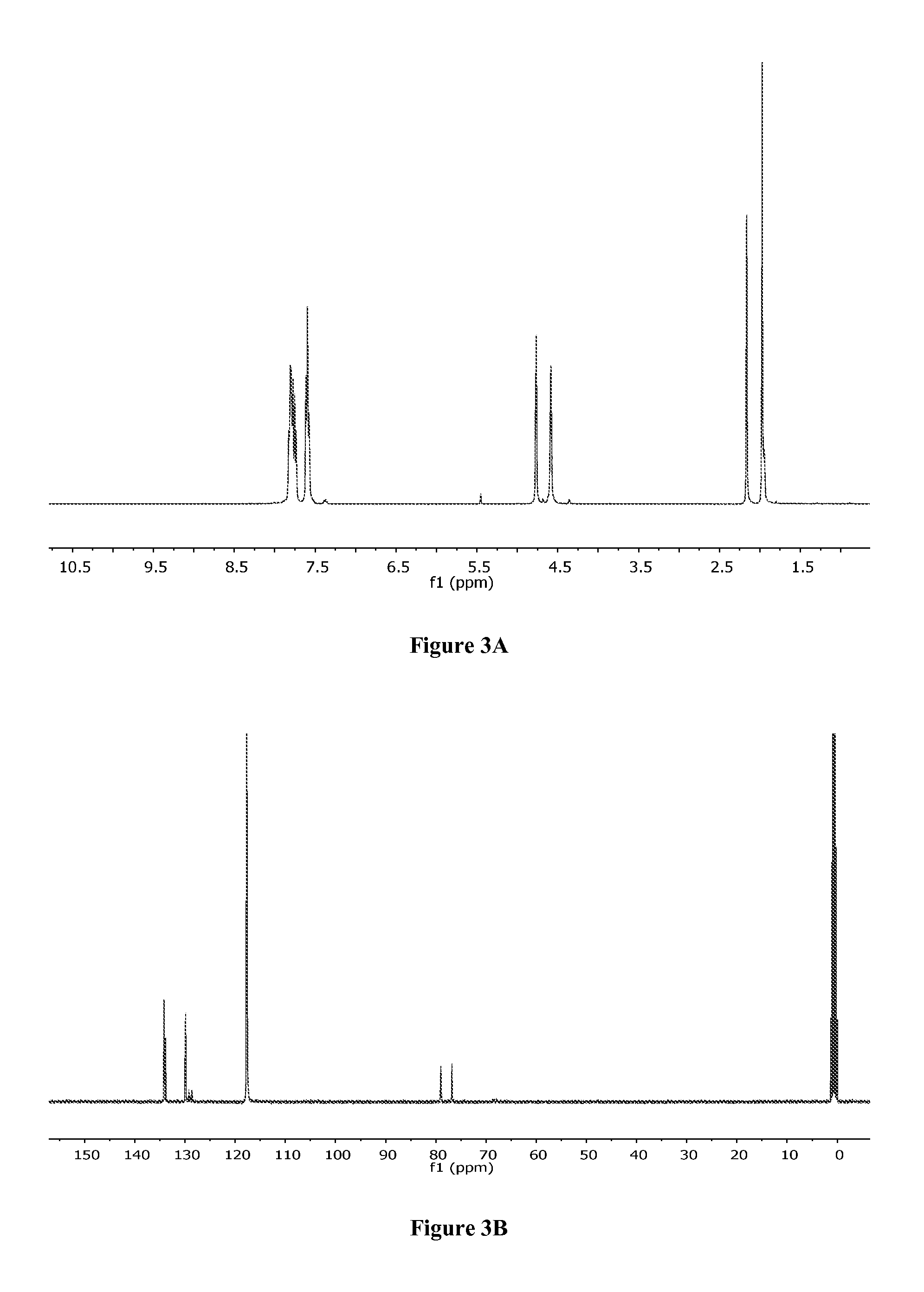Determining stereoisomeric excess, concentration and absolute configuration
a chiral analyte and concentration technology, applied in the field of evaluating the concentration, and/or stereoisomeric excess, and/or absolute configuration of chiral analytes, can solve the problems of affecting the detection accuracy of ee, etc., to achieve rapid and accurate ee detection of minute sample amounts, strong chiroptical readout, and strong uv chang
- Summary
- Abstract
- Description
- Claims
- Application Information
AI Technical Summary
Benefits of technology
Problems solved by technology
Method used
Image
Examples
example 1
Synthetic Procedures Generally
[0384]All commercially available reagents and solvents were used without further purification. NMR spectra were obtained at 400 MHz (1H NMR) and 100 MHz (13C NMR) using CD3CN or CDCl3 as solvent. Chemical shifts are reported in ppm relative to TMS. Electrospray ionization mass spectra (ESI-MS) were collected on a Thermo Finnigan LCQ instrument. Samples were dissolved in ACN for MS analysis (1 mg / mL).
[0385]The compound numbers used in Examples 1-10 refer to the following compounds (where applicable, only one enantiomer is shown). Some of these compounds may be numbered differently in Examples 11-25 and / or Examples 26-32.
example 2
Synthesis of [Bis(2-(Diphenylphosphino)Phenyl)Ether]Palladium(II) Dichloride
[0386]To a solution of (1,5-cyclooctadiene)palladium(II) dichloride (540 mg, 1 mmol) in 25 mL of CH2Cl2 was added bis[2-(diphenylphosphino)phenyl]ether (285 mg, 1 mmol) dissolved in 6 mL of CH2Cl2. After stirring at room temperature for 3.5 hours, the mixture was filtrated and the precipitate was washed with 3 mL of CH2Cl2 followed by 20 mL of hexanes. After drying under vacuum, 586 mg (0.82 mmol, 82%) of [bis(2-(diphenylphosphino)phenyl)ether]palladium(II) dichloride (Bonazzi et al., J. Am. Chem. Soc. 132:1432-42 (2010), which is hereby incorporated by reference in its entirety) was obtained. 1H NMR (CDCl3) (FIG. 1A): δ=6.73 (dd, J=8.0 Hz, 8.0 Hz, 2H), 6.86 (dd, J=7.5 Hz, 7.5 Hz, 2H), 6.96 (m, 2H), 7.26-7.42 (m, 16H), 7.56-7.63 (m, 6H). 13C NMR (CDCl3) (FIG. 1B): δ=121.5, 124.9, 127.8, 128.8, 129.4, 130.7, 132.8, 134.9, 135.1.
example 3
Synthesis of Bis(Acetonitrile)[Bis(2-(Diphenylphosphino)Phenyl)Ether]Palladium(II) Hexafluoroantimonate, 1
[0387]To a solution of [bis(2-(diphenylphosphino)phenyl)ether]palladium(II) dichloride (286 mg, 0.4 mmol) in 5 mL of ACN was added AgSbF6 (274.4 mg, 0.8 mmol, 2 equivalents) dissolved in 3 mL of ACN. After stirring at room temperature for 20 minutes, the mixture was filtrated through a short celite column using CH2Cl2 as mobile phase. The solvents were removed and the residue was passed through another celite column using CH2Cl2. After redissolving in 3 mL of CH2Cl2, recrystallization upon addition of 20 mL of hexanes gave 468 mg (0.4 mmol, 98%) of 1 (Aikawa et al., Bull. Chem. Soc. Jpn. 85:201-08 (2012), which is hereby incorporated by reference in its entirety) as a yellow solid. 1H NMR (CD3CN) (FIG. 2A): δ=1.97 (s, 6H), 6.81 (m, 2H), 7.09 (ddd, J=1.2 Hz, 7.4 Hz, 7.4 Hz, 2H), 7.20 (m, 2H), 7.53-7.72 (m, 22H). 13C NMR (CD3CN) (FIG. 2B): δ=1.8, 118.9, 123.6, 126.8, 127.4, 127.8,...
PUM
| Property | Measurement | Unit |
|---|---|---|
| concentration | aaaaa | aaaaa |
| circular dichroism spectroscopy | aaaaa | aaaaa |
| optical rotatory dispersion | aaaaa | aaaaa |
Abstract
Description
Claims
Application Information
 Login to View More
Login to View More - R&D
- Intellectual Property
- Life Sciences
- Materials
- Tech Scout
- Unparalleled Data Quality
- Higher Quality Content
- 60% Fewer Hallucinations
Browse by: Latest US Patents, China's latest patents, Technical Efficacy Thesaurus, Application Domain, Technology Topic, Popular Technical Reports.
© 2025 PatSnap. All rights reserved.Legal|Privacy policy|Modern Slavery Act Transparency Statement|Sitemap|About US| Contact US: help@patsnap.com



